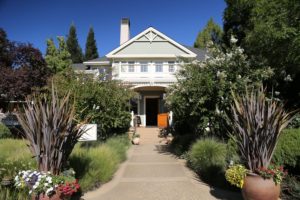
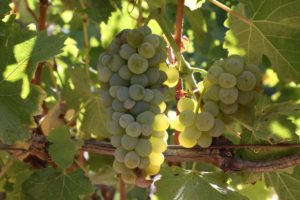
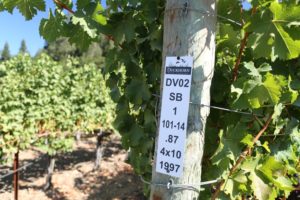 Duckhorn Vineyards was founded in 1976 by Dan and Margaret Duckhorn (along with 5 initial silent shareholders); their inaugural vintage was from 1978. Margaret died in late 2022 at age 83. Dan and Margaret also founded Paraduxx Winery, located further south on the Silverado Trail (about 20 minutes from Duckhorn). Duckhorn Wine Company was purchased in 2016 by TSG Consumer Partners, a San Francisco based private equity firm. As of our latest update to this review, they own approximately 70 brands ranging from automotive to household products. Several well-known ones include Dutch Bros Coffee, Planet Fitness, Famous Amos, Vitaminwater and Voss Water.
Duckhorn Vineyards was founded in 1976 by Dan and Margaret Duckhorn (along with 5 initial silent shareholders); their inaugural vintage was from 1978. Margaret died in late 2022 at age 83. Dan and Margaret also founded Paraduxx Winery, located further south on the Silverado Trail (about 20 minutes from Duckhorn). Duckhorn Wine Company was purchased in 2016 by TSG Consumer Partners, a San Francisco based private equity firm. As of our latest update to this review, they own approximately 70 brands ranging from automotive to household products. Several well-known ones include Dutch Bros Coffee, Planet Fitness, Famous Amos, Vitaminwater and Voss Water.
In early October 2024, it was announced that The Duckhorn Portfolio was acquired by Butterfly Equity for 1.95 billion dollars.
In addition to Duckhorn Vineyards, Butterfly Equity owns other wineries and brands within the Duckhorn Portfolio, including Calera Wine Company in the Mount Harlan appellation east of Salinas in San Benito County on California’s Central Coast (a long time producer known for Pinot Noir) Canvasback (originally a label part of Paraduxx – now a Walla Walla, Washington based vineyard and brand), Decoy (can taste at Duckhorn), Greenwing (eastern Washington), Goldeneye (based to the north of the Napa Valley in Anderson Valley, Mendocino County), Kosta Browne Winery in Sonoma County, Migration (winery + tasting room in Napa’s Carneros District at the former Starmont Winery location), Paraduxx and Postmark (both Napa Valley). In addition to these wineries or brands, the company owns approximately 1,100 vineyard acres (15+ unique sites ranging in size from 5 acre parcels up to 75 acres) with a total production of over 900,000 cases.
Dan was born in San Francisco and grew up in various parts of northern California ultimately earning his undergraduate and graduate degrees in Corporate Finance from UC Berkeley. Margaret was born in New York – came west for Nursing School, met Dan at UC Berkeley and ultimately graduated from UCSF. Both had family involved in wine – Dan’s father made cherry wine in his cellar in Sebastopol and Margaret’s great grandfather on her mother’s side owned a winery in Stockton California.
Interestingly Dan’s family name was originally Duc Horn (Hungarian & German roots) but when his family immigrated through Ellis Island the name was changed to the more easily pronounced Duckhorn (and combined rather than two words).
Dan’s introduction to the Napa Valley came through his work at the time; while living in the San Francisco Bay Area, Dan was working for Crocker Associates – Dan’s boss Charlie Crocker mentioned he had purchased a summer home on Dowdell Lane in St. Helena (presently, still owned by Charlie). The property had come with a number of greenhouses which were not being used and there was demand from several vintners to use the greenhouses to grow bench-grafts (to supply local vineyards). With Charlie’s funding a new company was started called Vineyard Technical Services. Incidentally Charlie Crocker later founded his own winery Crocker & Starr with vintner Pam Starr – also on Dowdell Lane.
Charlie Crocker also helped fund the purchase of Duckhorn’s original (and still existing) 10-acre property off of Lodi Lane.
In order to help oversee the new vineyard company, Dan found himself driving up to the Napa Valley fairly often. He and Margaret eventually fell in love with the region and moved their family to the valley in 1973. Both also became fascinated with Merlot. Looking to the old world for inspiration and ideas, Dan and Ric Forman (then the winemaker at Sterling Vineyards – who was making small amounts of Merlot at the time) visited the Merlot dominated regions of Pomerol and Saint-Émilion in France in 1978 including a stop to Chateau Pétrus. Dan became intrigued with making a premium wine from Merlot. While in France they studied a number of techniques used in the cellar including the types of barrels used.
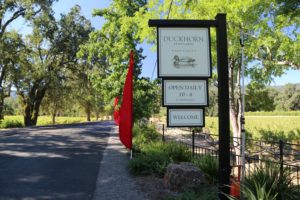
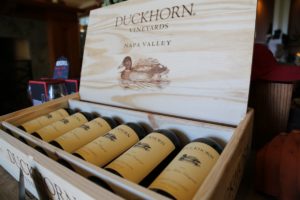
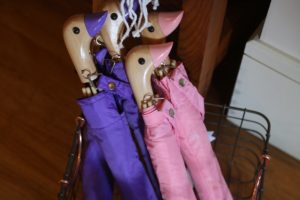 The first vintage of Duckhorn included 800 cases each of Merlot and Cabernet Sauvignon. The winery/barrel room at that time was simply a small shed with a few stainless-steel tanks out on the crush pad. As production increased in the early years, they decided they needed a larger facility. Noted local architect John Lail created the initial design concept.
The first vintage of Duckhorn included 800 cases each of Merlot and Cabernet Sauvignon. The winery/barrel room at that time was simply a small shed with a few stainless-steel tanks out on the crush pad. As production increased in the early years, they decided they needed a larger facility. Noted local architect John Lail created the initial design concept.
Their first Merlot produced under the Duckhorn label in 1978 was from the now iconic Three Palms Vineyard (located off of the Silverado Trail between Calistoga and St. Helena – in actuality 2.5 palms since one of the original palms died and had to be replanted). Winemaker at the time, Tom Rinaldi told us he added 15% Cabernet Sauvignon to that particular wine from Beatty Ranch on Howell Mountain.
The introduction to the owners of this vineyard, brothers John and Sloan Upton came from Ric Forman because he was already using some of their Merlot in a reserve wine for Sterling Vineyards. The Uptons sold their vineyard to Duckhorn in 2015. Incidentally Lillie Hitchcock Coit (namesake for San Francisco’s famous Coit Tower) used to live in what is now the Three Palms Vineyard – she called her home Larkmead (see Larkmead Winery and Frank Family winery for more information about their fascinating tie-ins with Ms. Coit). These palm trees roughly mark the spot where her elaborate house was once located.
The first Duckhorn Vineyards Cabernet Sauvignon was a combination of fruit from Howell Mountain and Steltzner Vineyards (in the Stags Leap Appellation). The Duckhorn’s made the gutsy decision to price their Merlot far higher than the majority of the Napa Cabernet Sauvignon’s at the time. This certainly got the initial attention of the wine world, but the quality of the wine stood up to the higher price.
A number of prominent Napa winemakers have worked at Duckhorn including founding winemaker Tom Rinaldi (who later went on to oversee the wine making at Provenance Winery and is often associated with Merlot) and Mark Beringer (Jacob Beringer’s great, great grandson who most recently is the winemaker at Beringer Winery).
Their original 10-acre property is located near the town of St. Helena and is home to Marlee’s Vineyard originally planted by the Duckhorn’s in 1981. The vines surrounding their driveway and parking lot are currently planted to a very tasty Sauvignon Blanc and Sémillon. This is also the site of the gorgeous country style Duckhorn Vineyards Estate House. The winery is not open to the public by walk-in, but we have found if it’s not crowded and you show up, they are welcoming and will let you make an appointment to taste. However, be aware that during many weekends due to crowds this is just not possible as well as weekdays in the summer and fall months. As a result, appointments ahead of time (before you physically are on the property) are highly suggested for weekdays and required for weekends. Several private rooms are available for private tastings – for general tastings guests sit at marble covered tables – waited on by a host.
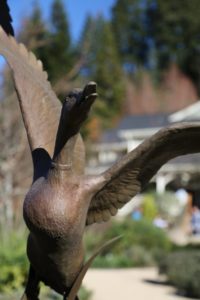
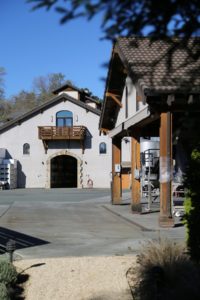 The semi-private estate tastings are offered daily and appointments are required. Tastings are educational featuring limited production Napa Valley wines. Tastings can be paired with an addition charcuterie plate. Along with Paraduxx their “sister” Napa winery (located 15 minutes away), this tasting salon is first class and one of the nicest in the valley. Think restaurant dining but for wine instead. The building’s primary room is surrounded with windows, and one has good views overlooking the gardens. A small circular wine bar is located in the center of the tasting room and is surrounded by tables.
The semi-private estate tastings are offered daily and appointments are required. Tastings are educational featuring limited production Napa Valley wines. Tastings can be paired with an addition charcuterie plate. Along with Paraduxx their “sister” Napa winery (located 15 minutes away), this tasting salon is first class and one of the nicest in the valley. Think restaurant dining but for wine instead. The building’s primary room is surrounded with windows, and one has good views overlooking the gardens. A small circular wine bar is located in the center of the tasting room and is surrounded by tables.
Visitors can choose from one of two “classic” tastings or their “reserve” tasting, which includes a tour and pairs food with the wine. The majority of the wines served are Merlot and Cabernet Sauvignon – Duckhorn specializes in Bordeaux varietals. While their production is significant (for a Napa based winery) the wines are artisan in style as they are hand crafted – during fermentation and aging the wines are kept in small lots corresponding to specific blocks within their vineyards.
As of our latest update, they own and manage 8 different vineyards in the Napa Valley area including several on Howell Mountain. They also source fruit from premium growers. Wine making starts in the vineyards and terroir is extremely important – their website provides detailed information about each of their vineyards.
The surrounding gardens are nicely laid out and it is worth a few minutes of your time to stroll around the estate or admire the grounds from their porch. Also take a look at their “duck” collection – which of course is a tribute to Dan and Margaret’s last name & the name of the winery (Dan is also a duck hunter).
Duckhorn wines have been well represented in various White House functions and dinners spanning the terms of multiple presidents. Menus from these White House dinners are displayed inside the Estate House.
Select Wines

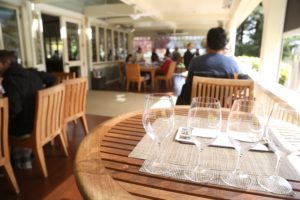
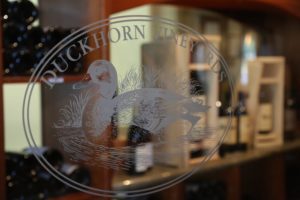 Whites
Whites
While Duckhorn is commonly associated with Merlot, they have been producing Sauvignon Blanc since 1982. Its quality is consistent, regardless of vintage.
The 2023 Duckhorn Vineyards Sauvignon Blanc North Coast is a blend of 91% Sauvignon Blanc and 9% Sémillon. And with grapes from four counties in this bottling (42% Sonoma County, 42% Napa Valley, 13% Lake County and 3% Mendocino County), North Coast is an appropriate geographical descriptor. This wine is pale gold in color; the floral, fruity, vivacious and tropical bouquet offers aromas of pineapple, lychee, pineapple guava, white peaches and nectarines, pear, citrus blossom and star jasmine. There is a also an underlying herbal note, perhaps of lemon grass or lemon verbena. Balanced and minerally, the palate reveals flavors of golden delicious apple, pear, pineapple, guava, mandarin orange, ripe grape fruit, passion fruit and nectarine. The mouth feel is creamy and rounded which nicely complements its lively acidity. While tasting this bottling, our thoughts drifted towards potential pairings. Something white from the sea – perhaps halibut or seared scallops. This wine was aged in 94% stainless steel tanks and 6% new French oak barrels for 5 months sur lie.
The 2018 Duckhorn Vineyards Sauvignon Blanc is 85% Sauvignon Blanc and 15% Sémillon – with the grapes coming from both their estate properties and other vineyards properties in the Napa Valley. Was aged sur lie for 5 months in 92% stainless steel and 8% new French oak. Fairly clear in the glass with a pale-yellow tinge. Shows green apple and lime on the bouquet. Zesty, with also hints of fresh cut grass and gooseberry. From the bouquet, one might think it would be ‘greener’ and ‘leaner’ on the palate, but this is not the case. Rather, shows an intriguing softness across the palate – with lively and tangy fruit. A refreshing showing – very balanced.
The 2022 Duckhorn Chardonnay Napa Valley is medium gold in color; the sporty and fun bouquet offers aromatics of ripe pineapple, honeysuckle and honeycomb, lemon zest, baked golden apples, ripe pear, almost overripe cantaloupe and a plethora of ripe orchard fruits including apricot, peach and nectarine. The palate offers a saline and almost briny textural feel, complemented with rich and brightly shining acidity. There are flavors of baked pears, Golden delicious apple, yellow nectarine, a light lemon zest, caramel, vanilla and caramelized sugars. Lingers with a richness of flavor, pomelo pith which is felt almost as an herbal/white pepper spice note and a light drying character presumably from its oak aging. This wine was 90% fermented in oak barrel and 10% in stainless steel tank; it was aged for 9 months in 100% French oak of which 40% was new and 60% neutral barrels. And 40% of the wine went through malolactic fermentation.
Reds
The 2020 Duckhorn Vineyards Napa Valley Merlot is a blend of 80% Merlot, 17% Cabernet Sauvignon, 2% Cabernet Franc and 1% Petit Verdot. This wine is deep ruby in color; the bouquet feels warm and comforting like sitting in front of a warm fire but completely sans any smoke taint, a character we unfortunately occasionally notice in wines from Napa Valley from this challenging vintage. For reference we tasted this wine 5 years post vintage. Kudos to Duckhorn for careful testing and extensive sorting, resulting in lower yields. Its aromas include dark cherry, blackberry, boysenberry and Persian mulberry accompanied by additional layers of dark chocolate and mocha. On the palate there are similar flavors as expressed on the bouquet including blackberry, ripe plum, dark cherry and boysenberry. The finish is dark and savory with flavors of dried herbs, dark pepper, toasted oak and a meaty character. The tannins are gravelly and lightly grainy but overall are well integrated. We would love to pair this with a Pork tenderloin in a balsamic glaze.
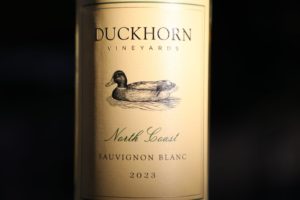 The 2016 Duckhorn Vineyards Stout Vineyard Merlot is from a vineyard site at about 1,700 feet on Howell Mountain. This wine is 95% Merlot and 5% Cabernet Sauvignon aged 100% in French oak of which 75% was new and 25% neutral. Features pretty aromatics including blackberry, black licorice and hints of white pepper. Juicy across the palate with a mouthwatering savory finish showing fruit and hints of cigar leaf. The tannins were still a bit tightly woven at the time of our tasting. Great acidity – this is a fairly robust Merlot. Should have lots of life ahead of it.
The 2016 Duckhorn Vineyards Stout Vineyard Merlot is from a vineyard site at about 1,700 feet on Howell Mountain. This wine is 95% Merlot and 5% Cabernet Sauvignon aged 100% in French oak of which 75% was new and 25% neutral. Features pretty aromatics including blackberry, black licorice and hints of white pepper. Juicy across the palate with a mouthwatering savory finish showing fruit and hints of cigar leaf. The tannins were still a bit tightly woven at the time of our tasting. Great acidity – this is a fairly robust Merlot. Should have lots of life ahead of it.
The 2016 Duckhorn Three Palms Cabernet Sauvignon. Perhaps this iconic vineyard is most known for its exceptional Merlot, a wine that always seems to be sold out during our visits over the years. But this vineyard also produces excellent Cabernet Sauvignon. This wine is a blend of 92% Cabernet Sauvignon, 5% Merlot and 3% Malbec. It was aged in 100% French oak of which 80% was new and 20% neutral. Shows aromas of cherry cola, blackberry, tobacco smoke and old cedar box. Reminds me of my grandmother’s cedar jewelry box that was lined with velvet. I used to open that up as a child just to enjoy the smell – not to admire the pretty jewelry! The lingering tannins show some grip – dry, dusty and noticeably dense in their texture.
The 2016 Duckhorn Vineyards Discussion Red Wine is a blend of 55% Cabernet Sauvignon, 43% Merlot, 1% Cabernet Franc and 1% Petit Verdot. Aged for 24 months, 18 of which were in new French oak and 6 months in neutral oak. All from estate owned vineyards. Offers bright fruit aromatics including ripe plum, cherry, cassis and hints of cocoa powder. Offers mouthwatering acidity but without being tart. One of the highlights of this wine is its textural softness – lingers with fine-grained slightly dusty tannins along with hints of cedar and a dark spice component. Lovely balance throughout.
Hospitality House
Three Palms Vineyard
Duckhorn Portfolio, St. Helena (offices, formerly home of Wilson-Daniels)
Total annual production of all Duckhorn wines is over 100,000 cases. For more information and or to join their wine club, visit: www.duckhorn.com or www.duckhornportfolio.com
OTHER NON-NAPA WINERIES UNDER DUCKHORN OWNERSHIP
Note: Paraduxx and Migration have their own sperate reviews on this website because they are based in Napa Valley. Duckhorn continues to acquire property; in 2022 they purchased 289 acres (of which about 265 are planted) in the San Miguel District sub-appellation within the Paso Robles AVA. And in 2023 the company purchased the former Clos du Bois facility in Alexander Valley, Sonoma County.
Calera Winery
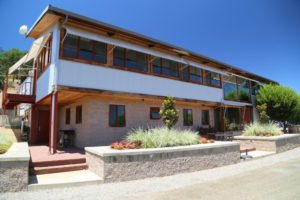 A more recent acquisition in the Duckhorn Wine Co. Portfolio was in 2017 when the company acquired Calera, a predominantly Pinot Noir and Chardonnay producer in San Benito County. Calera (with little traffic about a 3-hour drive from Duckhorn Vineyards) was founded by winemaker Josh Jensen (died in 2022) in 1975 with his first vintage from purchased grapes and also the same year their first Pinot Noir was planted.
A more recent acquisition in the Duckhorn Wine Co. Portfolio was in 2017 when the company acquired Calera, a predominantly Pinot Noir and Chardonnay producer in San Benito County. Calera (with little traffic about a 3-hour drive from Duckhorn Vineyards) was founded by winemaker Josh Jensen (died in 2022) in 1975 with his first vintage from purchased grapes and also the same year their first Pinot Noir was planted.
The vineyards are all at elevation above 2,000 with the highest vines topping out at over 2,500 feet. The name Calera is Spanish for limekiln, honoring the vineyard site where limestone had previously been quarried. A stone lime kiln for processing the rock into quicklime (used for construction) dates from the 1860s is still standing and serves as the icon for the winery, appearing on all their wine labels.
The winery location feels remote (although it is only about a 20-minute drive from Hollister) – accessible via a windy road through the Hollister Hills. No vineyards are planted on site – rather they are all located on Mt. Harlan a several mile drive from the winery and tasting room. Visitors can either tasting inside the winery or outside on the terrace overlooking the rugged and undeveloped hills.
Several distinctive Pinot Noir wines are produced from each of their vineyard blocks. A highly unusual wine for California is Aligoté – only four rows of this white Burgundian varietal are planted – usually producing around 100 cases a year. Calera was one of the first California producers to bottle this wine. Chardonnay and Viognier are also grown.
Canvasback
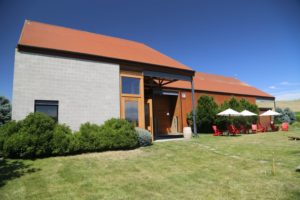 The winery was founded in 2012 (the first brand/winery outside of California under the Duckhorn ownership) and opened a tasting room for the first time in June 2019 on site of the former home of Solemn Cellars and Doubleback Winery (Former NFL quarterback Drew Bledsoe’s wines were made here for a time). The winery is located a very short drive from the Oregon border (from the property one can see about where the border is located).
The winery was founded in 2012 (the first brand/winery outside of California under the Duckhorn ownership) and opened a tasting room for the first time in June 2019 on site of the former home of Solemn Cellars and Doubleback Winery (Former NFL quarterback Drew Bledsoe’s wines were made here for a time). The winery is located a very short drive from the Oregon border (from the property one can see about where the border is located).
The first vintage of Canvasback was in 2012 using grapes sourced from premium vineyards in the Red Mountain AVA. Canvasback’s own estate 20-acre Longwinds Vineyard is also in the Red Mountain AVA and was planted in 2014. Red Mountain is both the warmest AVA in Washington and the smallest with only 4,040 acres total of which slightly over half is planted to vineyards.
After visiting, tasting and writing about well over 1,200 Napa Valley based wineries, producers or tasting rooms – we have become strongly biased and partial towards Napa Valley produced Cabernet Sauvignon as perhaps might be expected. During a Napa Valley in Washington trip, we were highly impressed by the Cabernet Sauvignon wines from this state – arguably the two greatest Cabernet Sauvignon producing parts of the country are in Napa Valley and parts of eastern Washington.
The wines we tried from various Washington producers with connections to the Napa Valley including at Canvasback are wines with a strong sense of place, balance and perhaps a bit more restraint at times compared to some of the more opulent Cabernet Sauvignon wines coming from the Napa Valley.
Canvasback produced a Riesling for the first time in 2018 from the Columbia Valley. However, the focus of their production is on Cabernet Sauvignon – including one from the Walla Walla Valley and two from the Red Mountain appellation including the standout, the Grand Passage Red Mountain Cabernet Sauvignon. And Canvasback also produces a Walla Walla Valley Syrah (the 2016) is aromatically diverse and a wine that shows a lot of character.
The Canvasback wines are fairly well distributed; we have even seen select vintages for sale in the Seattle Airport.
Goldeneye Winery
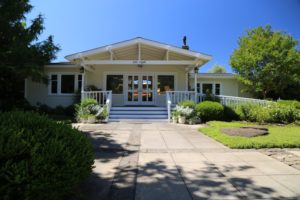 Goldeneye Winery, vineyards and tasting room are located to the north in beautiful Mendocino County’s Anderson Valley (about a 2-hour drive from the Duckhorn tasting room in Napa Valley). Similar to the experience at Duckhorn, the property features a ‘home’ which serves as the tasting room – but arguably the expansive views of their rolling vineyards and hillsides are superior here as compared to their Napa property.
Goldeneye Winery, vineyards and tasting room are located to the north in beautiful Mendocino County’s Anderson Valley (about a 2-hour drive from the Duckhorn tasting room in Napa Valley). Similar to the experience at Duckhorn, the property features a ‘home’ which serves as the tasting room – but arguably the expansive views of their rolling vineyards and hillsides are superior here as compared to their Napa property.
All tastings are by appointment (although if not busy last minute appointment requests are ok) and are seated – either indoors or outdoors if the weather permits. The focus of their production is on Pinot Noir from the Anderson Valley although they do make wines from other varieties including Pinot Gris and Gewürztraminer.
Goldeneye was founded in 1996 when the Duckhorn’s purchased an 80-acre ranch in Anderson Valley they named Confluence Vineyard – they planted additional vines here a year later and produced their first vintage from the property that year (1997) which was released in 2000 (also the same year they acquired a second vineyard, Gowan Creek Vineyard (which is now home to the winery and tasting room). And later they purchased a third vineyard site in the northern part of Anderson Valley called The Narrows Vineyard.
Kosta Browne
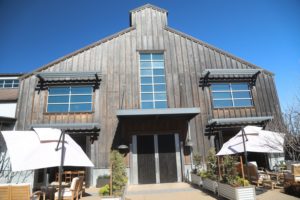
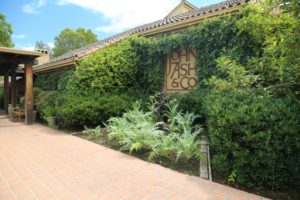 Founded in 1997 by Dan Kosta and Michael Browne, the roots for their wines began at John Ash Restaurant (north of Santa Rosa) where both men were working at the time (Dan was the General Manager and Michael was the sommelier). Wanting to make their own wine, they would put aside a small amount of money from each of their shifts, eventually pooling together about $1400 and using that money to purchase 1/2 of Pinot Noir, a used barrel and an old stemmer/crusher. They made their first wine, 24 cases of Russian River Pinot Noir and bottled it under the label Kosta Browne.
Founded in 1997 by Dan Kosta and Michael Browne, the roots for their wines began at John Ash Restaurant (north of Santa Rosa) where both men were working at the time (Dan was the General Manager and Michael was the sommelier). Wanting to make their own wine, they would put aside a small amount of money from each of their shifts, eventually pooling together about $1400 and using that money to purchase 1/2 of Pinot Noir, a used barrel and an old stemmer/crusher. They made their first wine, 24 cases of Russian River Pinot Noir and bottled it under the label Kosta Browne.
Michael became their winemaker while Dan handled sales and marketing. Partner, Chris Costello joined a few years after; he was also an integral part of the business helping with their overall vision for how to sell the wine including building a very strong list-based membership model – where even today the majority of their wines are sold through their mailing list.
Without a home of their own, the wines were produced at several locations around Sonoma County over the years before permanently settling into their own sizable ‘home’ in the Barlow Center in Sebastopol in 2014. Several barrel rooms are located on site along with some very well-appointed hospitality spaces. TSG Consumer Partners (Duckhorn) purchased Kosta Browne in 2018.
Total annual production is usually between 25,000 and 30,000 cases. While the initial focus of Kosta Browne was Pinot Noir in 2010, they began producing Chardonnay. Today they produce several Chardonnay wines (more elegant Burgundian style compared to vintages prior to 2015) and as of our latest update to this review – about 15 different Pinot Noir wines. And Kosta Browne owns two estate properties – the Keefer Ranch in the Green Valley part of the Russian River Valley and Cerise, a sizable property in the hills above north of Boonville in the Anderson Valley (Mendocino County).
Production includes wines produced under their appellation series, single vineyard wines and wines bottled under the Observations label – very limited production wines that are only available for tastings and sales through on-site visits. Noteworthy is their 2009 Sonoma Coast Pinot Noir (part of the appellation series of wines) earned the Wine Spectator’s Wine of the Year award in 2011. And using a negociant in Burgundy, and also purchasing grapes from small family owned vineyards, Kosta Browne produces primarily Pinot Noir but also Chardonnay from Burgundy. The wines are produced in Beaune.
The winery began hosting visits by appointment in 2018 and for the first few years there were many difficulties in staying open from severe floods which flooded a significant portion of The Barlow including their winery and some of their hospitality spaces (fortunately they had recently bottled, and the barrels were mostly empty), heavy smoke from fires and various statewide shutdowns.
Visits by appointment only are for existing members of their mailing list (signing up for their list is easy and straight forward). Several experiences are tailored towards the types of wine offered at the tastings. Tastings are highly personalized – each party visiting will be hosted by one individual during the duration of the visit.
Select Wines
The 2017 Kosta Browne One Sixteen Chardonnay (named after Highway 116 in Sonoma County) is medium to deep gold in color. An elegant Burgundian style, this wine is noteworthy for what it is missing – primarily oak and heavy influence from secondary fermentation (i.e., buttery characteristics). The bouquet shows aromas of green apple and a hazelnut nuance. A beautiful slightly creamy texture is certainly present, but it is not heavy, nor does it dominate the mouth feel. Flavors of lime, pear on the edge of ripeness and other citrus characteristics show. Very nice acidity. One does not always associate California Chardonnays with having the ability to age – but this one has the richness of fruit, complexity of character and acid to allow it to evolve in a good way for perhaps 5 to 8 years post vintage date.
The 2017 Kosta Brown Russian River Valley Pinot Noir shows a pretty bouquet with touches of baking spices, cherry cola and hints of white pepper. Plenty of fruit as well including bright raspberry. As the bouquet breathes further, more notes of the oak influence shows. Balanced and smooth the wine offers flavors of red currant and a lingering red cherry tartness. The tannins are present but light in texture on the finish – still a little tight at the time of our tasting. Very good acidity.
The 2017 Kosta Browne Sonoma Coast Pinot Noir is a blend of fruit from multiple vineyards; the backbone of this wine is from Gap’s Crown in the hills near Cotati. Sports darker aromatics then the 2017 Russian River Pinot Noir with notes of rhubarb, darker berry fruits and cherry. As it opens, continues to show its fruit rather than oak influence. The purity of fruit from this variety shows through nicely on the aromatics. The bouquet complements the palate nicely – also with darker berry fruits including blackberry.
Sonoma-Cutrer Vineyards
In November 2023 it was announced that the Duckhorn portfolio had acquired Russian River based Sonoma-Cutrer Vineyards from the Brown-Forman Corporation. Sonoma-Cutrer Vineyards was founded in 1973 and produced their first commercial vintage in 1981. The winery is located south of Windsor on the west side of the Sonoma County Airport. The winery is known for their Chardonnay and owns more than 1,100 acres in Sonoma County.
Sonoma-Cutrer was founded by former air force fighter pilot Brice Cutrer Jones in 1973 when he began planting grapes on his property. Jones sold 80% of his interest in the winery to Brown-Forman Corporation in 1999 and then two years later departed the operations. But he didn’t retire; instead he founded Emeritus Vineyards in Sonoma County’s Russian River Valley (still owned by his family).
We will visit Sonoma Cutrer for a tasting and a tour as time and budget allows, and we will update our notes and photography here at that time.

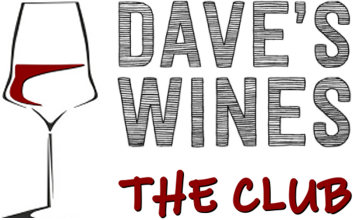




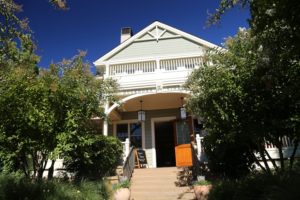
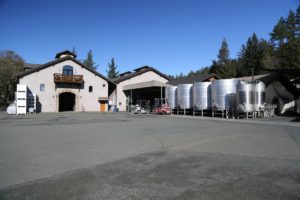
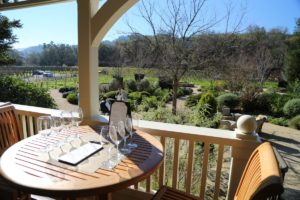
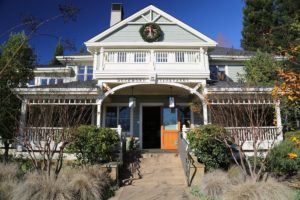
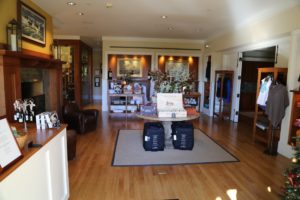
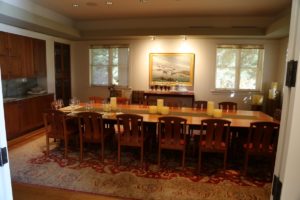
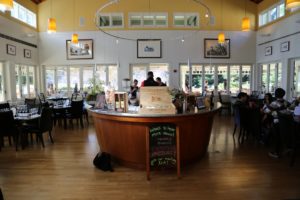
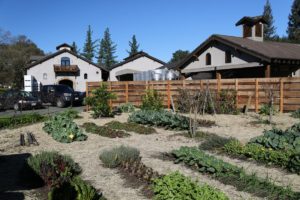
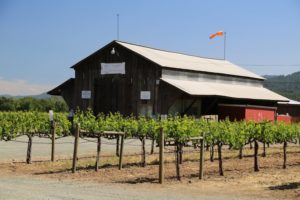
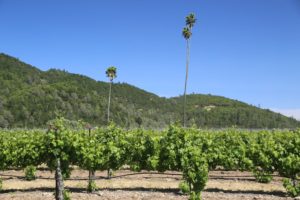
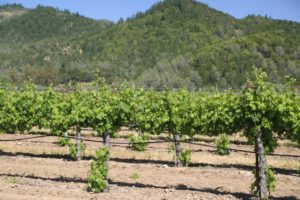
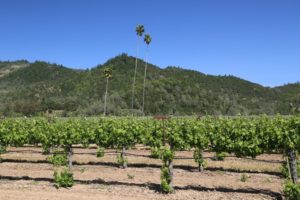
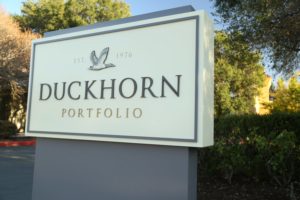
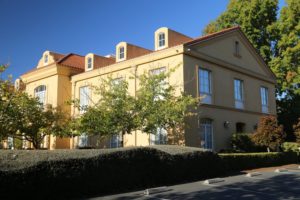
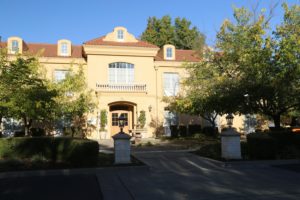
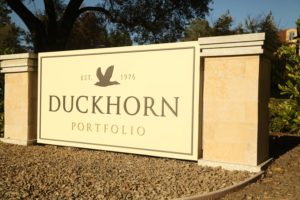
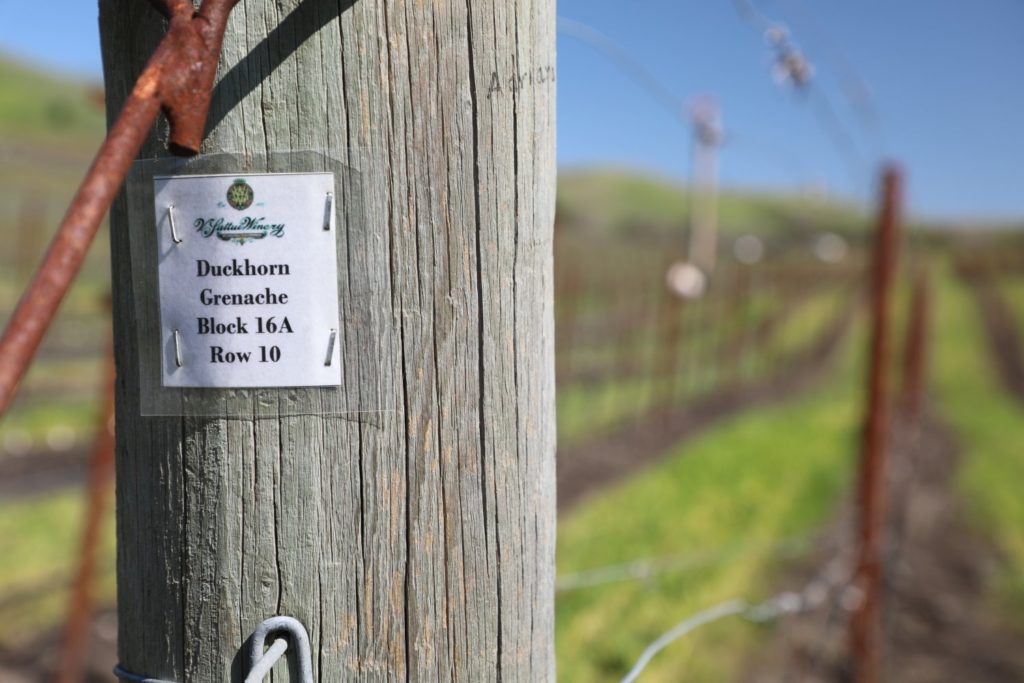
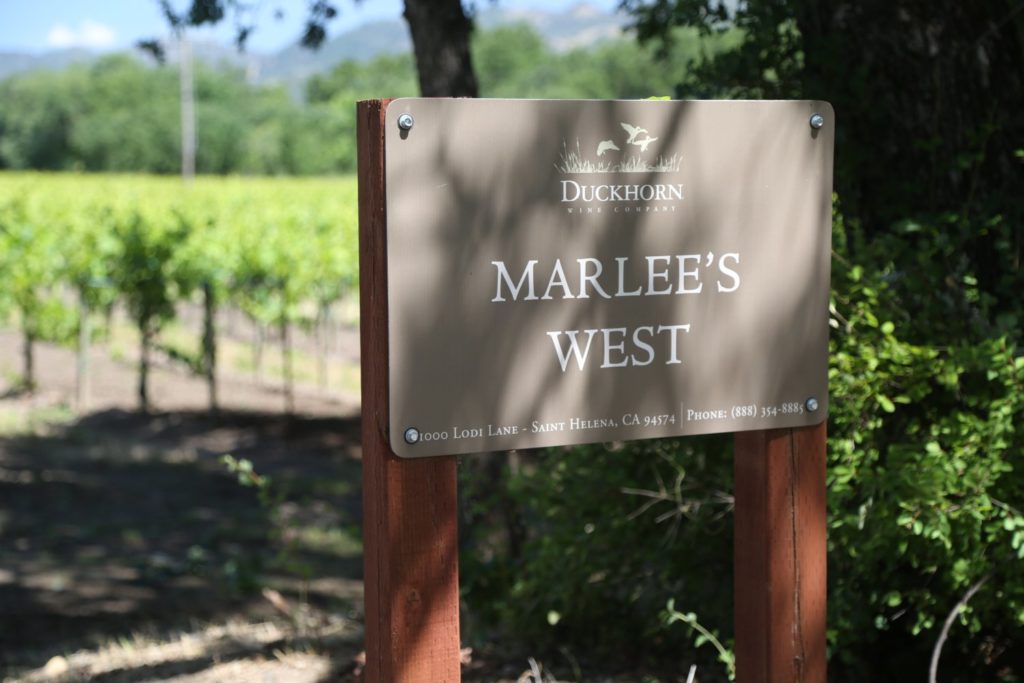
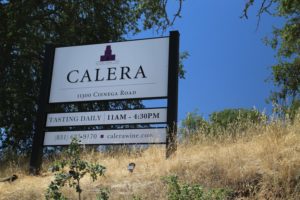
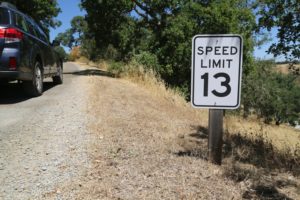
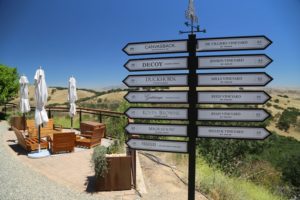
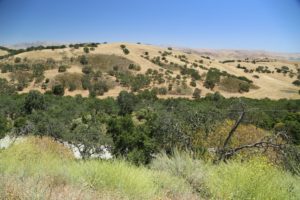
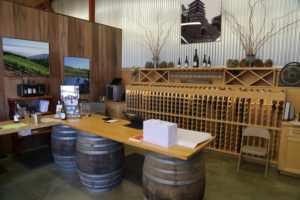
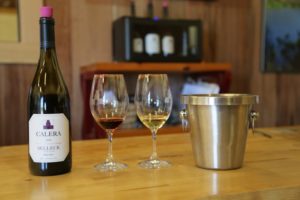
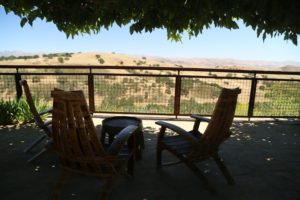
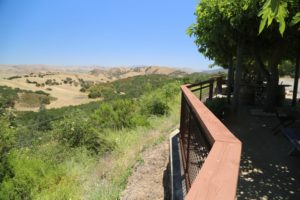
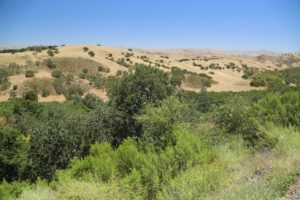
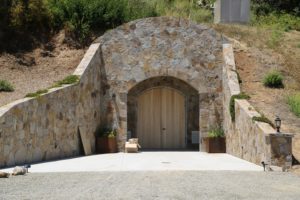
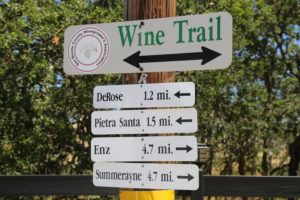
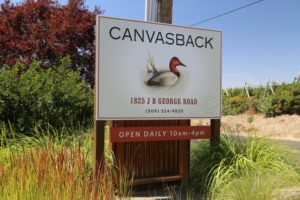
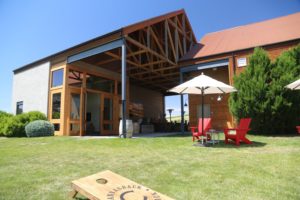
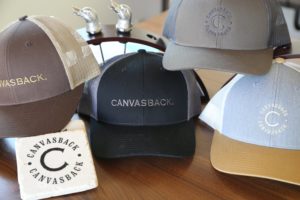
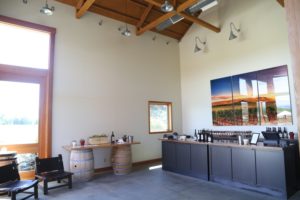
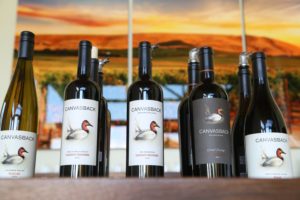
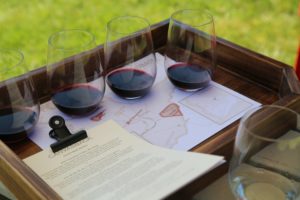
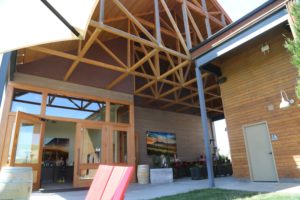
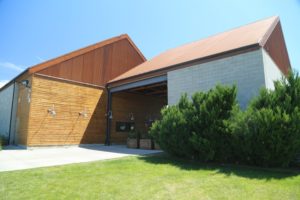
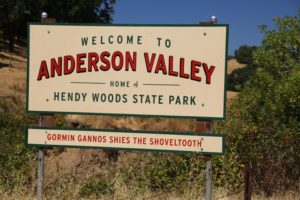
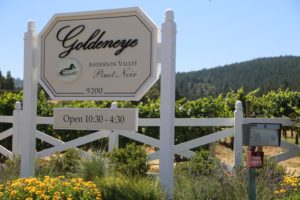
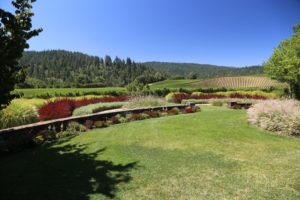
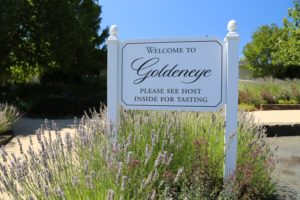
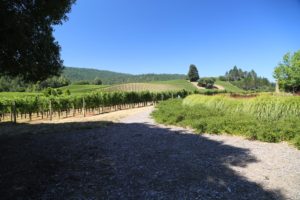
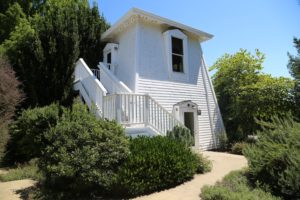
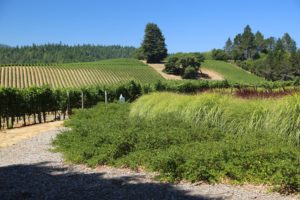
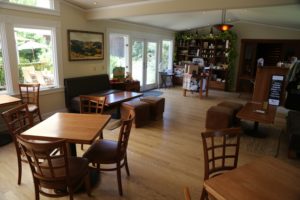
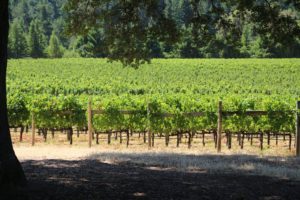
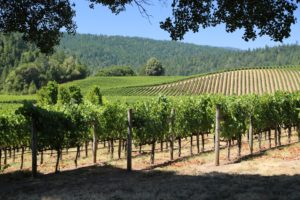
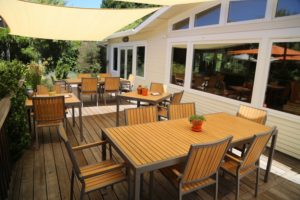
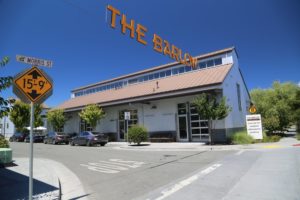
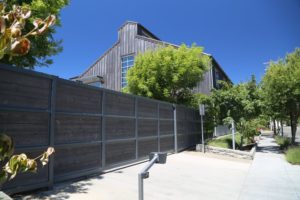
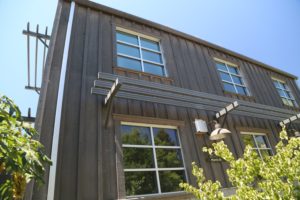
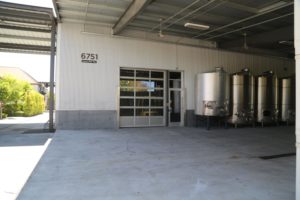
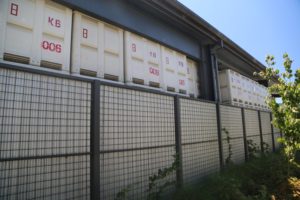
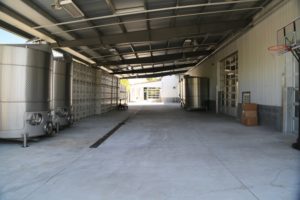
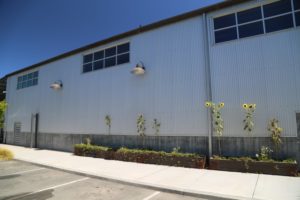
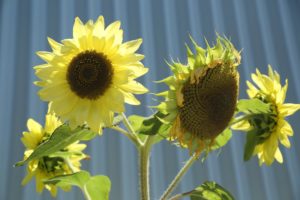
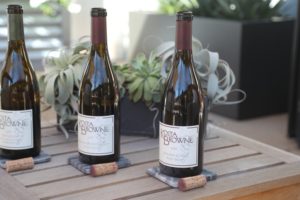
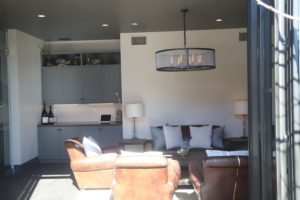
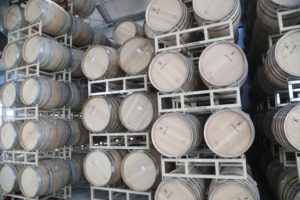
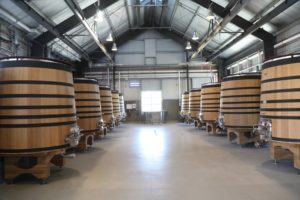
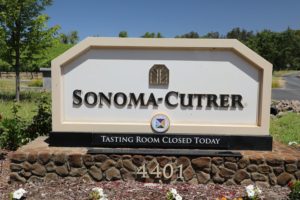
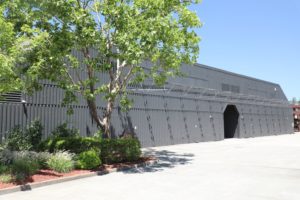

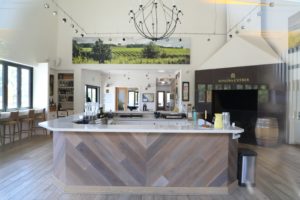


Leave a Reply